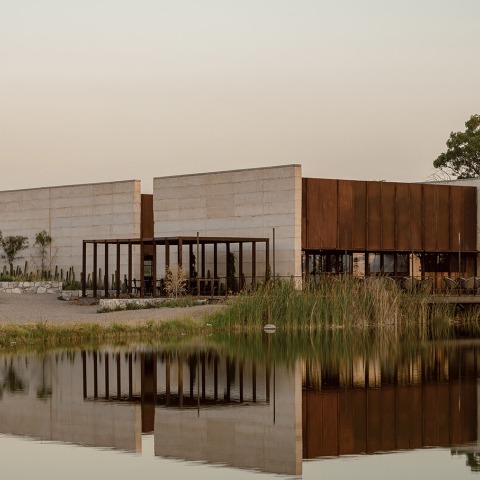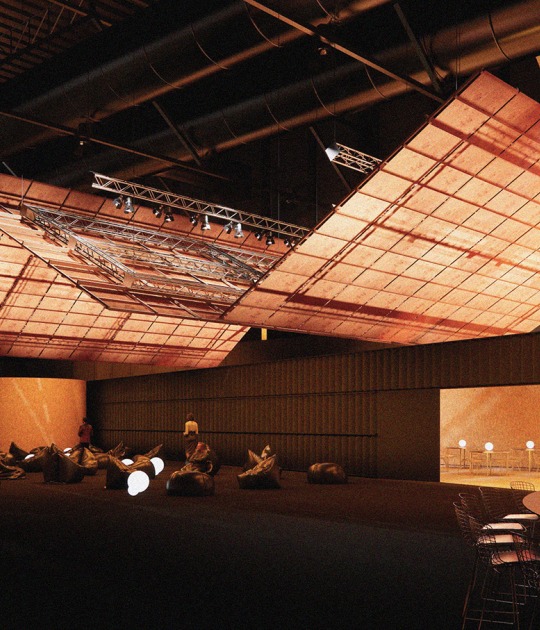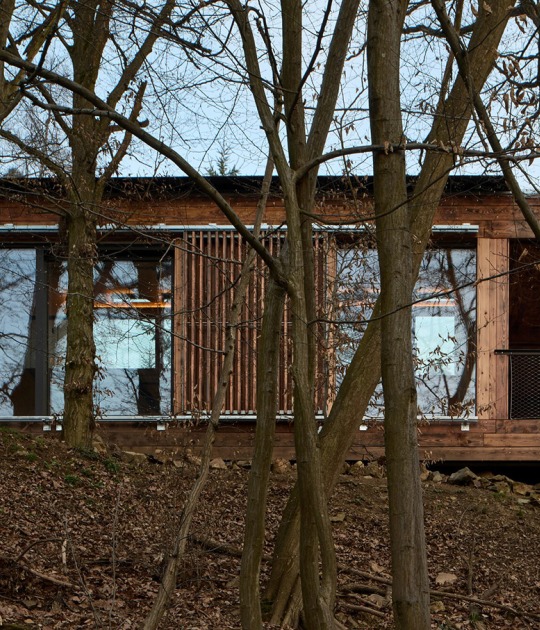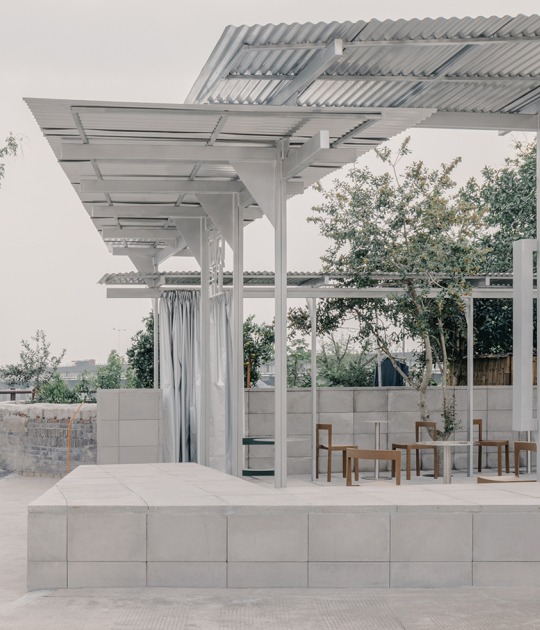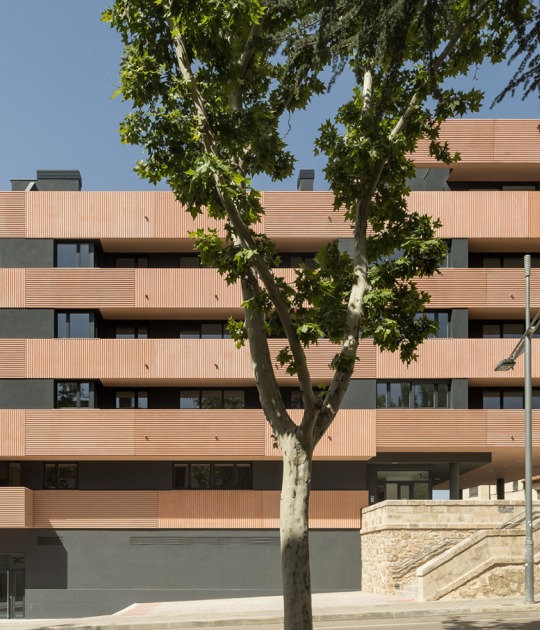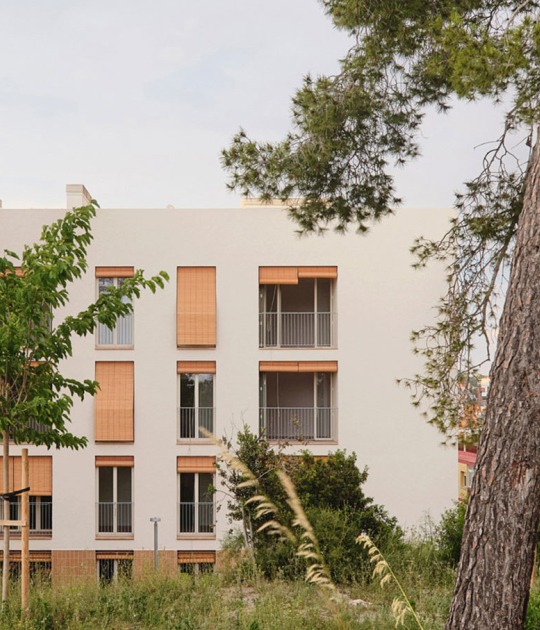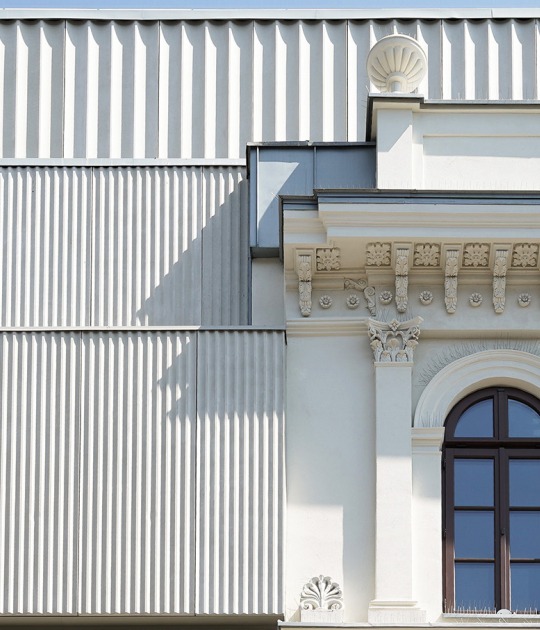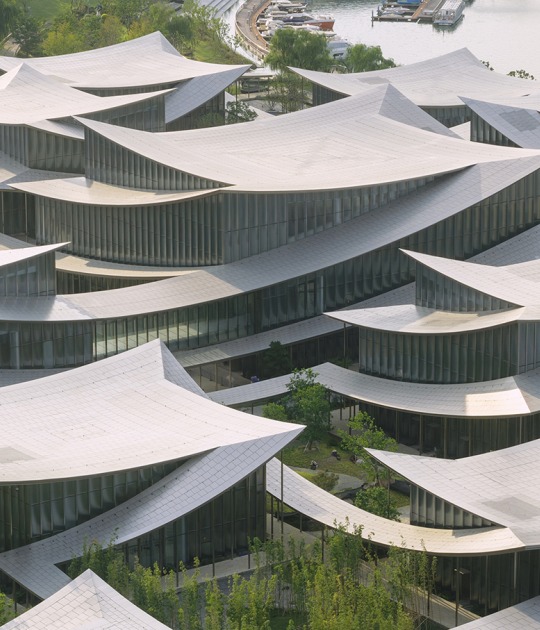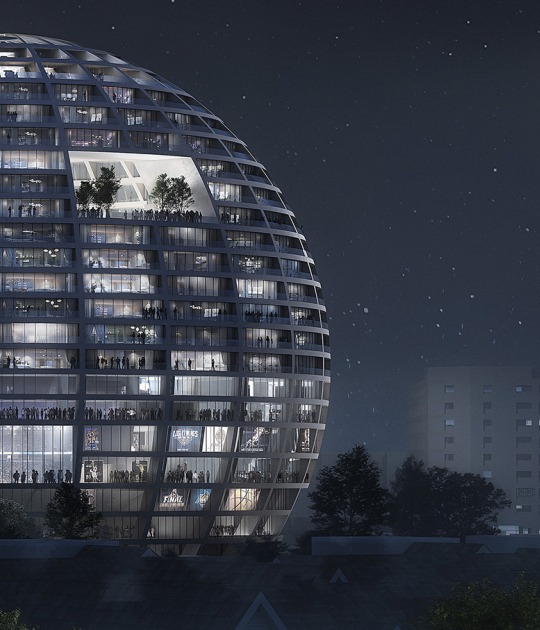The "loose" soil-cement walls close the building on its perimeter, finishing off closing the interior spaces of each building with light metal and sheet structures, in the manner of agricultural buildings in the countryside. In the interior space, a floor made of train sleepers and a wooden ceiling are used, seeking greater warmth to create an atmosphere suitable for the enjoyment and maturation of the wine.

Tierratinta Winery by COA arquitectura. Photograph by César Béjar Studio.
Project description by COA Arquitectura
The complex is made up of three buildings and an esplanade for events interconnected by walkways and gardens. A nucleus of bathrooms, winery and boutique, a restaurant and the winery building, tasting room and cellar.
The buildings are arranged with diagonal geometries generating finishes and confinements between them and on the other hand openings and visual directions towards the different landscapes: on the one hand the lake, the vines and a belt of Eucalyptus finishing, and on the other, vines in the foreground. flat and in the background the Cerro del Muerto.

Tierratinta Winery by COA arquitectura. Photograph by César Béjar Studio.
The buildings are confined with "loose" soil-cement walls, whether independent, square or "c" within which the spaces end up being closed with light metal and sheet structures, in the manner of agricultural buildings in the countryside.
The open space between the walls of the buildings and the esplanade is worked with low desert vegetation of cacti and bushes, olive trees, gravel and low stone walls that serve both as benches and as containment for the terraces. In the lake area, these are arranged in parallel lines echoing the geometry of the vines.

Tierratinta Winery by COA arquitectura. Photograph by César Béjar Studio.
Upon arrival, a square of walls, a backdrop for a row of cacti, welcomes and indicates the entrance to a road that leads to the central esplanade. This first building contains the core of bathrooms, and on the façade that faces the esplanade, a pair of full-height openings indicate the entrances for men and women. Upon entering, a patio of cacti welcomes you to waiting porches. The bathrooms are surrounded by a roof and screens made of sheet metal and wood, and a continuous metal bar for the sinks directs the experience towards the common patio. Visual privacy is achieved with a low “T”-shaped stone wall.
The winery appears as the end of the road and esplanade with a wall forty-seven meters long by five meters high in which once again a thin opening indicates the entrance. Upon entering, a patio welcomes the visitor and from there you can access the production hall on one side or the tasting room on the other. The nave is roofed with "sawtooth" sheet metal, taking in light from the north through a façade of ironwork windows. The tasting room is bordered by a pair of north-south walls, and in the other direction its façades of pivoting doors allow the continuity of the patio through it to exit to a deck projecting over the lake. The interior space is covered with a floor of train sleepers and a wooden ceiling seeking greater warmth, and in it only four elements: a closet attached to the wall, a pair of bars and a metal cylinder that through a rear opening gives entrance to a spiral staircase that leads to the cellar.

Tierratinta Winery by COA arquitectura. Photograph by César Béjar Studio.
Once downstairs, a winding hallway allows you to leave behind the natural light and dramatize the surprise upon arrival. Being below the production warehouse, braced columns support the concrete roof and metal beams, thus freeing the side walls of existing earth resulting from the excavation. A bottle cabinet, stones moistened by drops of water, a bar and barrels on a gravel floor complete the space, seeking an ideal atmosphere for both maturation and enjoyment of the wine.
